| Buchhandlung Heesen | Versandbuchhandlung für Evangelische Theologie |
Impressum | |
| Freudenstadt / Loßburg | Datenschutzhinweise | ||
| Tel. 07446 952 418 1 | Buchhandlung.Heesen@t-online.de | ||
| Da unsere Angebote manuell erstellt werden und während des Seitenaufrufes keine Verbindung zu einer Buchdatenbank aufgebaut wird prüfen wir die Verkaufspreise bei Rechnungsstellung auf Richtigkeit und berechnen den gesetzlich festgelegten Buchpreis. Falls sich dadurch eine Preiserhöhung ergibt werden wir Sie vor Versand informieren, Sie können dann diesem Preis zustimmen oder vom Kauf zurücktreten. Hinweise zum Datenschutz und Cookies | |||
| Series Archeologica (SA) ,Vandenhoeck & Ruprecht / Universitätsverlag Fribourg | ||
|
Keine Entdeckung dieses Jahrhunderts hat das Verständnis des Neuen
Testaments und des antiken Judentums so bereichert und verändert wie die
Funde von Qumran und in der Wüste Juda entlang
des Toten Meeres. 40 Jahre nach der spektakulären Ausgrabung der Siedlung von Qumran am Westufer des Toten Meeres unter der Leitung von Roland de Vaux erscheint in NTOA.SA nun der authentische Ausgrabungsbericht, veröffentlicht unter der Verantwortung von Jean-Baptiste Humbert im Namen der École biblique et archéologique française de Jérusalem. Die kontroverse Diskussion um die Siedlung und die Leute von Qumran bekommt damit endlich ihre originale archäologische Basis, die für alle weiteren neuen Interpretationen und Kritiken unumgänglich sein wird. Die Reihe NOVUM TESTAMENTUM ET ORBIS ANTIQUUS (NTOA), begründet von Max Küchler (Fribourg) und Gerd Theißen (Heidelberg), wird von Martin Ebner (Bonn), Peter Lampe (Heidelberg), Stefan Schreiber (Augsburg) und Jürgen K. Zangenberg (Leiden) herausgegeben. Der Herausgeberkreis wird durch einen wissenschaftlichen Beitrat begleitet, der zur Zeit aus Helen Bond (Edinburgh), Raimo Hakola (Helsinki), Thomas Schumacher (Fribourg), John Barclay (Durham/GB) Armand Puig i Tàrrech (Barcelona), Ronny Reich (Haifa), Edmondo F. Lupieri (Chicago) und Stefan Münger (Bern) besteht. NTOA hat zum Ziel, die vielfältigen Kulturen der antiken Mittelmeerwelt mit wissenschaftlicher Prägnanz und interdisziplinärer Methodik aufzuarbeiten und für das Verständnis des antiken Judentums und frühen Christentums fruchtbar zu machen. NTOA wird durch die Series Archaeologica (SA) ergänzt. Die SA bietet in großformatigen Bänden Ausgrabungsberichte und Korpora von Fundobjekten. Beide Serien nehmen ikonographische, numismatische und epigraphische Studien auf. Die Beiträge in NTOA und NTOA.SA unterliegen strengem peer review. Beide Reihen richten sich an Theologinnen und Theologen, Archäologen, Historikerinnen, Orientalisten und Altertumswissenschaftlerinnen sowie an Fach- und Allgemeinbibliotheken. Die Reihen sind international und überkonfessionell; die Bände erscheinen in deutscher, englischer oder französischer Sprache. |
||
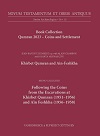 |
Bruno Callegher / Jean-Baptiste Humbert Buchpaket Qumran 2023 – Coins and Settlement Novum Testamentum et Orbis Antiquus. Series Archaeologica - Band 5 b und Band 10 Vandenhoeck & Ruprecht, 2024, 2 Bände, zusammen 888 Seiten, zusammen 4360 g, hardcover, 978-3-525-50370-6 600,00 EUR |
Novum Testamenteum et
Orbis Antiquus Series
Archeologica (SA) NTOA.SA Volume 5 b and 10 Buchpaket Qumran 2023 – Coins and Settlement / zur Seite Qumran das Paket besteht aus 2 Einzelbänden: Khirbet Qumran and Ain-Feshkha III A: 978-3-525-57090-6 Novum Testamenteum et Orbis Antiquus Series Archeologica (SA) NTOA.SA Volume 5 b For 60 years Qumran research has been focused on epigraphy, exegesis, and the historical sources of the Dead Sea Scrolls. Now the time has come to provide researchers with a complete documentation. Following the Coins from the Excavations at Khirbet Qumran (1951–1956) and Aïn Feshkha (1956–1958): 978-3-525-50194-8 Novum Testamenteum et Orbis Antiquus Series Archeologica (SA) NTOA.SA Volume10 The Qumran coins are worthy of a novel. Now they are finally published and provide the possibility to suggest that Qumran was a very open centre for trade and transactions, at least from finally the end of the second century BC until the destruction of the site in 70/72 CE. This documentation provides a new reasoning on effective data – not on assumptions. 888 Seiten, with 427 coloured Coins, 131 Images, Bruno Callegher is Full Professor on Numismatic and Monetary History at the University of Trieste. Jean-Baptiste Humbert is Director of the Archeological Laboratory of the Ecole Biblique in Jerusalem. |
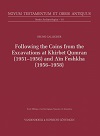 |
Bruno Callegher Following the Coins from the Excavations at Khirbet Qumran (1951–1956) and Aïn Feshkha (1956–1958) Vandenhoeck & Ruprecht, 2023, 312 Seiten, 1780 g, hardcover, 978-3-525-50194-8 300,00 EUR |
Novum Testamenteum et
Orbis Antiquus Series
Archeologica (SA) NTOA.SA Volume 10 Everyone has written about the Qumran coins without having seen them. Finally: here they are! The Qumran coins (hoard and single finds) are worthy of a novel. They were perfectly examined by H. Seyrig and A. Spijkerman, then the popular conviction spread that the coins had been lost. In fact, they were always kept where they had been classified. Now they are finally published and provide the possibility to suggest that Qumran was a very open centre for trade and transactions, at least from finally the end of the second century BC until the destruction of the site in 70/72 CE. This documentation provides a new reasoning on effective data – not on assumptions. Table of Contents |
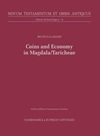 |
Bruno Callegher Coins and Economy in Magdala/Taricheae Vandenhoeck & Ruprecht, 2023, 405 Seiten, 2031 g, hardcover, 978-3-525-50193-1 350,00 EUR |
Novum Testamenteum et
Orbis Antiquus Series
Archeologica (SA) NTOA.SA Volume 9 On a monetary basis, Magdala must be considered as one of the most important and active settlements between the 1st century BC and most of the 3rd century AD on Lake Kinneret, a place of production and trade, of supply for military forces, certainly in contact with other trading centres, probably located on the Mediterranean coast, however in a 'market' perspective quite different from our current experience and even from the semantic content of this word, often abused with a semantic extension that does not correspond to the experience of the ancients. Its monetary decline started on the early 4th century, when the economic and monetary strategies of the Constantinian era shifted the flow of money to other routes, especially between the great port cities of the Mediterranean. The welcome contribution of Callegher’s study derives from the new data published, which allows us to overcome “clichés” and a stereotypical view of both the archaeological site and the economy of the Upper Galilee. |
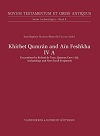 |
Jean-Baptiste Humbert Khirbet Qumrân and Aïn Feshkha IV A Excavations by P. Roland de Vaux: The Caves. Qumran Cave 11Q: Archaeology and New Scroll Fragments Vandenhoeck & Ruprecht, 2019, 250 Seiten, hardcover 978-3-525-56469-1 400,00 EUR |
Novum Testamenteum et
Orbis Antiquus Series
Archeologica (SA) NTOA.SA Volume 8 Sprache: Englisch Qumran Cave 11Q was discovered by Bedouin in 1956. In the cave, remains of around 30 Dead Sea Scrolls were found, a few of them in very good state of preservation (the Temple Scroll, the Psalm Scroll, the Paleo Leviticus Scroll, and the Targum Job Scroll). The cave was excavated by Roland de Vaux (École Biblique et Archéologique Française, Jerusalem) and Gerald L. Harding (Department of Antiquities of Jordan) in 1956; later by Joseph Patrich (University of Haifa) in 1988, and by Marcello Fidanzio and Dan Bahat (ISCAB FTL and Università della Svizzera Italiana) in 2017. Due to Roland de Vaux’s premature death, the archaeology of Cave 11Q has never been published. This volume presents the final report on the 1956, 1988 and 2017 excavations at Cave 11Q. Next to discussing the physical characteristics and stratigraphy of the cave and offering a full analysis of non-textual finds, the volume for the first time presents many tiny manuscript fragments found in storerooms during recent work. These fragments, most of which were collected during 1956 excavation, have not been known until now. The volume, therefore, offers the final report of Cave 11Q excavations as well as the editio princeps of the new fragments, followed by a reevaluation of the entire set of texts found in this famous cave. |
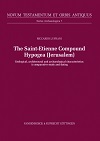 |
Riccardo Lufrani The Saint-Etienne Compound Hypogea (Jerusalem) Geological, architectural and archaeological characteristics: A comparative study and dating Vandenhoeck & Ruprecht, 2019, 320 Seiten, hardcover, 978-3-525-57311-2 400,00 EUR |
Novum Testamenteum et
Orbis Antiquus Series
Archeologica (SA) NTOA.SA Volume 7 In 1885, a large hypogeum was discovered at the Saint-E´tienne Compound, the domain acquired only two and a half years before by the Dominicans on the western slope of El Heidhemiyeh hill, about 250 m north of the Jerusalem Ottoman wall. After the unearthing of a second large hypogeum, only fifty metres north of Hypogeum 1, in their monumental work on the history of Jerusalem, the two eminent Dominican scholars Louis-Hugues Vincent and Felix-Marie Abel proposed to date the two burial complexes to the Hellenistic or Roman period. This dating remained unchallenged until the survey of 1974–75, carried out by the distinguished Israeli archaeologists Gabriel Barkay and Amos Kloner, who proposed to date the two burial caves towards the end of the Judahite kingdom, on the basis of an unsystematic comparison of few architectural features with those of other tombs. In the frame of the improved knowledge of the broad and adjacent archaeological contexts since the last study of the Saint-E´tienne Compound Hypogea, between 2011 and 2014 Riccardo Lufrani carried out a detailed survey of the two burial caves, providing new and more detailed photographic, topographic, archaeological and geological documentation. The systematic comparison of the significant architectural features of the Saint-E´tienne Compound Hypogea with a consistent sample of 22 tombs in the region suggest dating the hewing of the two hypogea to the Early Hellenistic period, shedding a new light on the history of Jerusalem. |
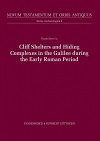 |
Yinon Shivti'el Cliff Shelters and Hiding Complexes The Jewish Defense Methods in the Galilee during the Early Roman Period Vandenhoeck & Ruprecht, 2019, 300 Seiten, hardcover, 978-3-525-54067-1 350,00 EUR |
Novum Testamenteum et
Orbis Antiquus Series
Archeologica (SA) NTOA.SA Volume 6 Cliff Shelters and Hiding Complexes in Galilee during the Early Roman Period” is the result of years of intensive study conducted by Yinon Shivtiel throughout Galilee combining historical, archaeological, and speleological research. The author documents and describes all the Galilean sites so far discovered containing the traces of underground cavities hewn out and readied by Jews as refuges and hiding places during the Early Roman period. The study relies on accounts in two of Flavius Josephus’ works, The Jewish War and The Life of Josephus, where Josephus records that the Jewish population in Galilee prepared two types of underground chambers for use in times of adversity, defined in the research as ‘cliff shelters’ and ‘hiding complexes’. During the author’s comprehensive fieldwork, which is thoroughly documented and described in the book, it became clear that the first method exploited natural caves whose openings were located at the top of steep cliffs, most of which could only be reached by rock climbing or rappelling with the aid of ropes. The many finds from these shelters shed light on their extensive use during the Early Roman period. Where no naturally fortified cliffs existed, the Jews of Galilee resorted to quarrying out underground hiding complexes. The book details the evidence and finds from the different forms of hiding complexes discovered beneath the remains of many of the Jewish settlements in Galilee chronicled by Flavius Josephus. Research into these complexes has revealed their resemblance to similar hiding systems discovered in the Judean plain. The book is copiously illustrated with plans, figures and photographs of both types of underground chambers and it discusses their connection with the desperate times faced by the Jews in Galilee throughout the entire Early Roman period, particularly during the Great Revolt. |
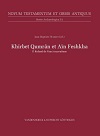 |
Jean-Baptiste Humbert Khirbet Qumran and Ain-Feshkha III A (in English translation) Roland de Vaux' excavations (1951–1956). The Archaeology of Qumran. Reassessment of the interpretation Peripheral constructions of the site Vandenhoeck & Ruprecht, 2023, 542 Seiten, with 179 figures and 113 planches, hardcover, 978-3-525-57090-6 350,00 EUR |
Novum Testamenteum et Orbis Antiquus Series Archeologica (SA) NTOA.SA Volume 5 B Sprache: Englisch For 60 years Qumran research has been focused on epigraphy, exegesis, and the historical sources of the Dead Sea Scrolls. The manuscripts are now published and accessible, and research is turning in a positive way to the archaeology of the site and its context. The time has come to provide researchers with a complete documentation. The excavator, Roland de Vaux, had given preliminary reports and a valuable interpretation made in the immediate aftermath of the excavations. Since considerable progress has been made in the archeology of Hellenistic and Roman Palestine, however, Qumran has to be reassessed and the interpretation objectively verified.Volume IIIA presents an up-to-date archaeological reconsideration: a shorter and more precise chronology, in which the earthquake of 31 BC is deleted; the concept of an Essene community is challenged, owing to the lack of a suitable infrastructure; the cemetery itself is connected with a Jewish diaspora scattered around the Dead Sea. Other facilities strengthen the Jewish character of the site, however. The function of Qumran fits better with the rites of a pilgrimage on the occasion of the festivals of Passover and Pentecost.In the second part, the peripheral Essene facilities, expanded around an earlier Hellenistic center, are analyzed and described. The essay seeks to outline their internal consistency and to determine their function. The restoration of a stratigraphy, by cross-checking the excavation archives, leads to a redistribution of pottery in four levels in a more precise chronology.The reconsideration makes use of anthropology, which opens up the archaeological field and throws additional light on the manuscripts. |
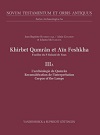 |
Yinon Shivti'el Khirbet Qumrân et Aïn Feshkha Fouilles du P. Roland de Vaux Sprache: Französisch Vandenhoeck & Ruprecht, 2016, 536 Seiten, with 179 figures and 113 planches, hardcover, 978-3-525-54054-1 500,00 EUR |
Novum Testamenteum et
Orbis Antiquus Series
Archeologica (SA) NTOA.SA Volume 5 A For 60 years Qumran research has been focused on epigraphy, exegesis, and the historical sources of the Dead Sea Scrolls. The manuscripts are now published and accessible, and research is turning in a positive way to the archaeology of the site and its context. The time has come to provide researchers with a complete documentation. The excavator, Roland de Vaux, had given preliminary reports and a valuable interpretation made in the immediate aftermath of the excavations. Since considerable progress has been made in the archeology of Hellenistic and Roman Palestine, however, Qumran has to be reassessed and the interpretation objectively verified.Volume IIIA presents an up-to-date archaeological reconsideration: a shorter and more precise chronology, in which the earthquake of 31 BC is deleted; the concept of an Essene community is challenged, owing to the lack of a suitable infrastructure; the cemetery itself is connected with a Jewish diaspora scattered around the Dead Sea. Other facilities strengthen the Jewish character of the site, however. The function of Qumran fits better with the rites of a pilgrimage on the occasion of the festivals of Passover and Pentecost.In the second part, the peripheral Essene facilities, expanded around an earlier Hellenistic center, are analyzed and described. The essay seeks to outline their internal consistency and to determine their function. The restoration of a stratigraphy, by cross-checking the excavation archives, leads to a redistribution of pottery in four levels in a more precise chronology.The reconsideration makes use of anthropology, which opens up the archaeological field and throws additional light on the manuscripts. Inhaltsverzeichnis und Leseprobe Sprache Französisch zur Seite Qumran |
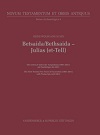 |
Heinz-Wolfgang Kuhn Betsaida/Bethsaida – Julias (et-Tell) The First Twenty-Five Years of Excavation (1987–2011) with Postscripts until 2013 Vandenhoeck & Ruprecht, 2015, 310 Seiten, 176 meist farb. Abb. u. 24 farb. Faltplänen, hardcover, 978-3-525-54025-1 400,00 EUR |
Novum Testamenteum et
Orbis Antiquus Series
Archeologica (SA) NTOA.SA Volume 4 Heinz-Wolfgang Kuhn informs about the excavations on et-Tell at the northern end of the Sea of Galilee, directed by the Israeli archaeologist Rami Arav, professor at the University of Nebraska at Omaha and Prof. Richard Freund of the University of Hartford as Project Director. It is now possible to identify the hill with Bethsaida/Julias, which is mentioned, among other texts, in the New Testament gospels (seven times), by the Jewish historian Josephus and in Rabbinical literature. This volume has a twofold purpose: On the one hand, the 15 collected essays in English and German, complemented by the Munich excavation plans, enable the reader to follow the course of the excavations from the very beginning in 1987. The emphasis of the collected essays (beginning with an article published in 1989) lies on the levels of the Hellenistic-Early Roman period, giving a continuous description of the excavations, as they developed over such a long time. On the other hand, one finds here the current data of the excavations, with many important details concerning the Hellenistic-Early Roman period, with the author focussing especially on the first half of the first century CE, the time of Jesus’ activity at Bethsaida, as can be shown through historical-critical research. In particular, an overview is given of all the coins of the Herods (from Herod the Great to Agrippa II, including five coins of Philip, the ruler at the time of Jesus), of finds of columns, figurines and decorated stones, and there are lists of the so-called Herodian oil lamps and the typical Jewish stone vessels from the Early Roman period. The question of a small pagan Hellenistic-Early Roman temple is discussed, illustrated with many pictures. The excavation plans of the whole area and including all excavated levels from Iron Age IIA on (with an exact grid), extending over 25 years, are unique since they can never be redrawn, due to the normal destruction of nature and ongoing excavations. Inhaltsverzeichnis und Leseprobe |
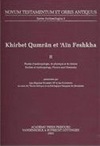 |
Jean-Baptiste Humbert Khirbet Qumrân et ‘Aïn Feshkha II Études d’anthropologie, de physique et de chimie. Vandenhoeck & Ruprecht, 2004, 483 Seiten, hardcover, 978-3-525-53973-6 300,00 EUR |
Novum Testamenteum et
Orbis Antiquus Series
Archeologica (SA) NTOA.SA Volume 3 Studies of Anthropology, Physics and Chemistry. Publication de l’École biblique et archéologique française de Jérusalem Eine Quellenedition wichtiger Qumrantexte. Sie beinhaltet Studien zur Anthropologie, Physik und Chemie. zur Seite Qumran |
| Valentina Grigorova Catalogue of the Ancient Greek and Roman Coins of the Josef Vital Kopp Collection at the University of Fribourg Switzerland Vandenhoeck u. Ruprecht, 2000, 127 Seiten, gebunden, 978-3-525-53971-2 89,00 EUR |
Novum Testamenteum et
Orbis Antiquus Series
Archeologica (SA) NTOA.SA Volume 2 Ein Katalog der griechischen und römischen Münzen der Sammlung von Josef Vital Kopp, jetzt im Besitz der Universität Freiburg. Kopp hinterließ eine umfangreiche Münzsammlung, die hier erstmals wissenschaftlich katalogisiert wurde. - Ein Katalog der Münzen der Sammlung von Josef Vital Kopp, jetzt im Besitz der Universität Freiburg. Der Denker und Dichter, Priester und Schriftsteller, Kollegiums-Professor und -Rektor Josef Vital Kopp wurde am 1. November 1906 im schweizerischen Beromünster (Kanton Luzern) geboren und schloss 1938 in Freiburg mit der Dissertation "Das physikalische Weltbild der frühen griechischen Dichtung" seine akademische Ausbildung ab. Das weitere Leben von J.V. Kopp ist geprägt von seiner Tätigkeit als Griechisch- und Lateinlehrer an der Kantonsschule in Luzern (1945-1962) und als Schriftsteller. Kopp starb 1966 in Luzern und hinterließ eine umfangreiche Münzsammlung, die hier erstmals wissenschaftlich katalogisiert wurde. - Aufbau des Katalogs Ancient Greek Coins - Münzen der griechischen Antike Roman Republican Coins - Münzen der römischen Republik Roman Imperial Coins - Münzen der römischen Kaiser Forgeries - Fälschungen The 209th coin from the Josef Vital Kopp Collection - Die 209. Münze Bibliography and List of Abbreviations - Literatur und Abkürzungen Mints - Register der Prägungen Kings, emperors, rulers, generals and their relatives - Register der Könige, Kaiser, Herrscher, Generäle und ihrer Verwandten Obverse and Reverse Types - Register der erhabenen und reversen Münzen Glossary - Begriffserläuterungen - Die Autorin Dr. Valentina Grigorova ist Wissenschaftliche Mitarbeiterin an den Ausgrabungen der École française d'archéologie d'Athènes in Argos, Griechenland. |
|
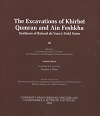 |
Jean-Baptiste Humbert The Excavations of Khirbet Qumran and Ain Feshkha Synthesis of Roland de Vaux’s Field Notes Vandenhoeck u. Ruprecht, 2003, 113 Seiten, Broschur, 978-3-525-53984-2 79,00 EUR |
Novum Testamenteum et Orbis Antiquus Series Archeologica (SA) NTOA.SA Volume 1 B English Edition. With the support of the Direction générale de la coopération internationale et du développement Ministère francais des Affaires étrangères zur Seite Qumran |
| Roland de Vaux Die Ausgrabungen von Qumran und En Feschcha Die Grabungstagebücher Vandenhoeck & Ruprecht, 1996, 230 Seiten, 36 Abb. und zahlr. Plänen, Tab., Diagrammen, Gebunden, 978-3-525-53980-4 100,00 EUR |
Novum Testamenteum et
Orbis Antiquus Series
Archeologica (SA) NTOA.SA Volume 1 A Die deutsche Übersetzung der Grabungstagebücher von Roland de Vaux - der ältesten Quelle zu den berühmten Ausgrabungen von Qumran - hält sich streng an das französische Original, das erstmals 1994 in NTOA Series Archaeologica samt einer photographischen Dokumentation und einer Gesamtliste des photographischen Fundus veröffentlicht wurde (siehe "Zum Thema"). Darüber hinaus enthält der Band eine Aufbereitung der in den Tagebüchern in der unsystematischenWeise der Fundgeschichte präsentierten Fakten in Form eines loci-orientierten Sachindex, zahlreicher Pläne und Detailskizzen, ausführlicher, systematisch geordneter Fundlisten und computergenerierter Münz-, Keramik- und Metallverzeichnisse und Tabellen, die zum Teil durch visualisierte Häufigkeitsverteilungen unterstützt sind. Eine fortlaufende Liste der Inventarnummern zu Qumran und EnFeschcha mit kurzer Fundcharakterisierung schließt den Band ab. Übersetzung und Informationsaufbereitung erschließen jetzt auch der deutschsprachigen Leserschaft die originalen Ausgrabungen von Qumran und sind zudem ein weiterer Schritt in deren sachlicher Auswertung und transparenten Darstellung. Die Autoren Roland de Vaux (1904-1971) war der hauptverantwortliche Ausgräber von Qumran und der erste Direktor der Veröffentlichung der Texte. Dr. theol. Ferdinand Rohrhirsch ist Wissenschaftlicher Assistent am Lehrstuhl für Praktische Philosophie und Geschichte der Philosophie an der Theologischen Fakultät in Eichstätt. Bettina Hofmeir ist Dipl.-Übersetzerin. |
|
| Jean-Baptiste Humbert Fouilles de Khirbet Qumran et de Aïn Feshkha I Vandenhoeck & Ruprecht, 1994, 418 Seiten, 538 Photographien, XLVIII Abb., 1 Frontispiz, Gebunden, 978-3-525-53970-5 225,00 EUR |
Novum Testamenteum et
Orbis Antiquus Series
Archeologica (SA) NTOA.SA Volume 1 Album de photographies. Répertoire du fonds photographique. Synthèse des notes de chantier du Père Roland de Vaux OP Keine Entdeckung dieses Jahrhunderts hat das Verständnis des Neuen Testaments und des antiken Judentums so bereichert und verändert wie die Funde von Qumran und in der Wüste Juda entlang des Toten Meeres. 40 Jahre nach der spektakulären Ausgrabung der Siedlung von Qumran am Westufer des Toten Meeres unter der Leitung von Roland de Vaux erscheint in NTOA.SA nun der authentische Ausgrabungsbericht, veröffentlicht unter der Verantwortung von Jean-Baptiste Humbert im Namen der École biblique et archéologique française de Jérusalem. Die kontroverse Diskussion um die Siedlung und die Leute von Qumran bekommt damit endlich ihre originale archäologische Basis, die für alle weiteren neuen Interpretationen und Kritiken unumgänglich sein wird. Der nun vorliegende Fotoband ist der erste des insgesamt auf fünf Bände angelegten Werkes. |
|